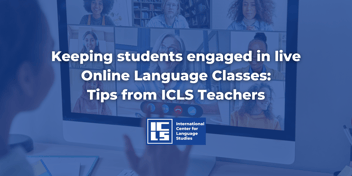6 Ways to Use ChatGPT to Learn a Foreign Language

By Edwige Simon, Ph.D., Director, Instructional Technology and Online Learning, International Center for Language Studies
The release of ChatGPT 3.5 in 2022 sparked many debates and discussions. While previous language models existed, none of them came close to being as good at generating human-like conversations and processing large amounts of information in mere seconds.
However, the debates surrounding ChatGPT extend beyond its potential impact on industries like content writing or customer services. There are valid concerns regarding the ethical implications and potential risks associated with the use of such advanced language models. These concerns include the propagation of misinformation, the biases present in the training data, and the need for robust safeguards to mitigate these risks.
Academic honesty is another ethical consideration, as the use of ChatGPT to complete assignments or write essays raises concerns about originality and integrity in education. It is important to emphasize that this article does not endorse using ChatGPT to cheat or take shortcuts in academic settings. Instead, it aims to explore ways in which ChatGPT can be a valuable tool to enhance language learning journeys.
When utilized responsibly, ChatGPT can serve as a language-learning companion. It can provide learners with opportunities for practicing conversations, receiving instant feedback on grammar and vocabulary usage, and exploring different linguistic nuances. Interacting with ChatGPT can help learners improve their speaking, writing, and comprehension skills by simulating real-life language scenarios. In combination with other language learning resources, such as textbooks, language exchange programs, and live classes, ChatGPT can offer additional practice and assistance.
It is essential to maintain a critical approach when using ChatGPT for any task. As an AI model, it may not always provide accurate or contextually appropriate responses. It is also essential to continue seeking opportunities to interact with native speakers and immerse oneself in authentic language environments to truly develop proficiency and cultural understanding.
ChatGPT Speaks Some Languages Better Than Others
ChatGPT has been trained to understand and generate texts in multiple languages. However, its proficiency may vary across different languages and dialects.
In the case of Spanish, which has a large presence in the dataset used to train ChatGPT, it tends to have a stronger command of the language compared to languages with fewer training examples, such as Mongolian or Swahili to only name a few. Similarly, while it can understand and generate texts in Modern Standard Arabic, it may struggle with dialectal variations that have significant differences in vocabulary, grammar, and pronunciation.
That said, I was stunned to discover that ChatGPT can speak a dialect like Chti, spoken by a relatively small number of people in Northern France. Regardless of this finding, before using ChatGPT to advance your second language proficiency, I strongly recommend that you research its actual ability in that language.

1. Using ChatGPT for Conversation Practice
ChatGPT can serve as a personal conversation partner, offering the flexibility to engage in written interactions or even integrate voice control plugins for a more interactive experience. These voice control plugins allow users to dictate their questions and receive ChatGPT responses audibly. Currently, my favorite one is the Voice Control for ChatGPT plugin, which supports over 30 different languages. This tool allows users to interact more naturally and seamlessly with the model. As language technology continues to advance, more voice control plugins and language options catering to a wider range of languages and dialects will likely become available.
To use ChatGPT as a conversation partner, simply tell the model about the topics you wish to discuss and even request a particular proficiency level.
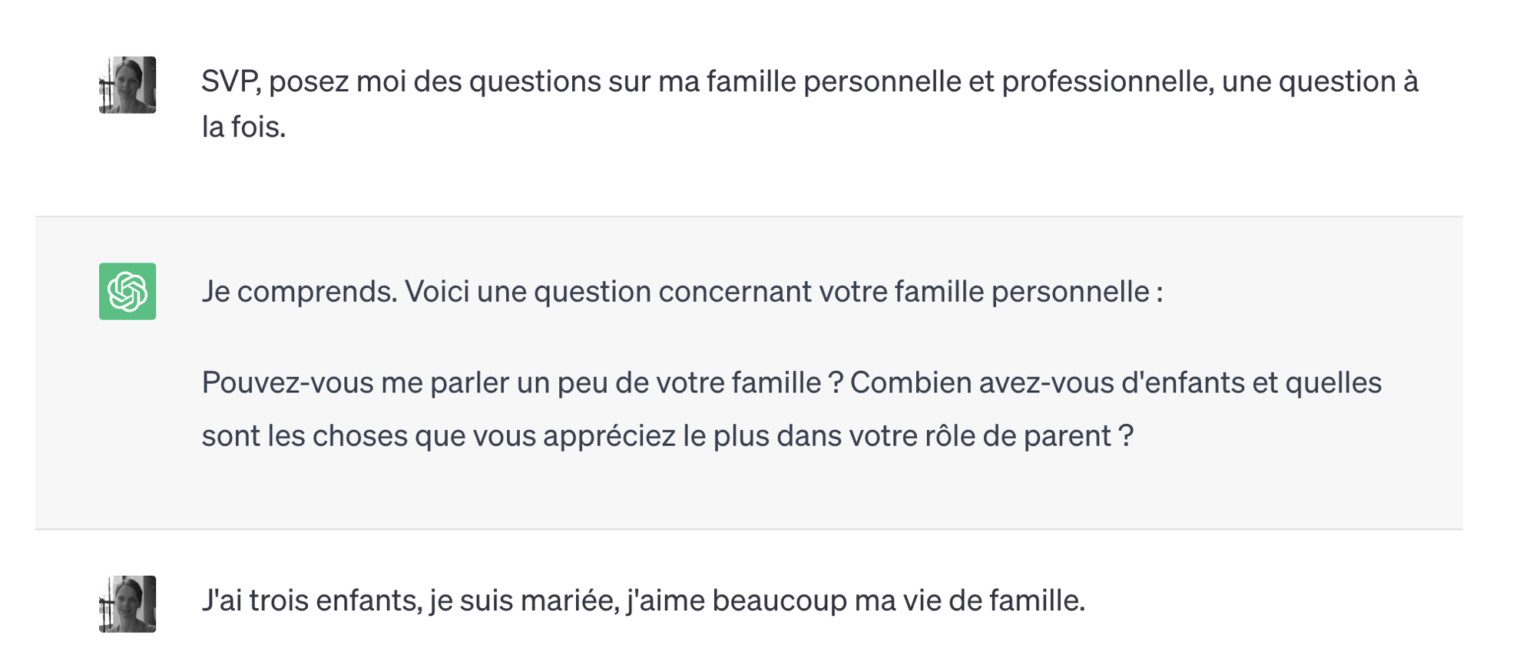
Another way to use the model is to engage in role-play conversation by pretending that you are at the restaurant, at the bank, or chatting with a good friend:
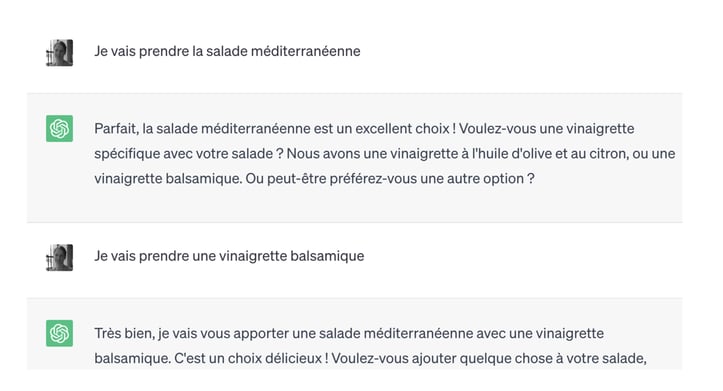
While ChatGPT can provide valuable language practice and conversation practice, it’s important to keep in mind that it is an AI model and may not fully replicate the experience of interacting with a human conversation partner. Human conversation partners bring cultural understanding, contextual nuances, and personal experiences that an AI model does not possess.
2. ChatGPT for Vocabulary Acquisition
ChatGPT can be a helpful tool for vocabulary expansion as it can generate a vocabulary list on a specific topic. Once you have the vocabulary list, ChatGPT can assist you in testing your knowledge by creating various types of tests, such as fill-in-the-blank or multiple-choice questions.
Keep in mind that the most effective way to expand your vocabulary is to study new vocabulary in context. Understanding how words are used in sentences or within a larger passage provides a deeper understanding of their meaning and usage. To this effect, you can ask ChatGPT to incorporate the vocabulary words into sentences, paragraphs, reading passages, or even dialogues.
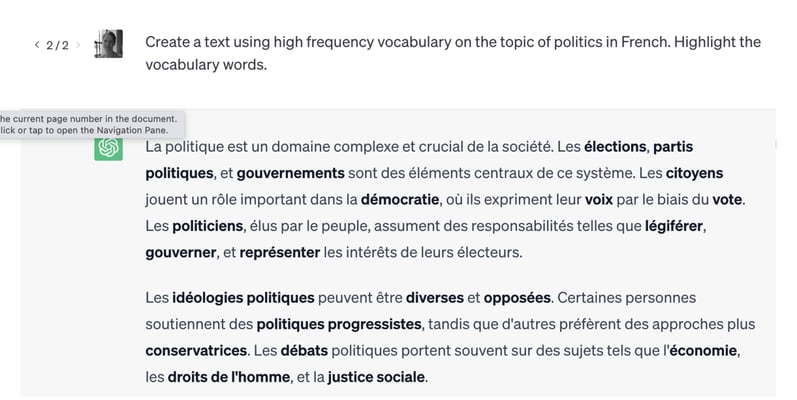
3. ChatGPT to Practice Pronunciation
Utilizing voice control plugins with ChatGPT allows you to speak your requests and receive audio responses. Some of these plugins provide options to adjust the voice, such as choosing between male or female voices, and even adjusting the speed to focus on pronunciation.
Using voice control tools, you can listen to how various words and phrases are pronounced and engage in shadowing activities.
Using speech recognition features also enables you to make spoken requests to ChatGPT. While ChatGPT may not provide explicit feedback on your pronunciation, it will only transcribe your request accurately if you pronounce the words well enough for the model to recognize them. This can indirectly serve as a way to gauge your pronunciation accuracy and adjust accordingly.

4. ChatGPT for Grammar Practice
ChatGPT has been trained on vast amounts of data, including various languages, but it is not completely error-free, especially when it comes to grammar in specific languages.
If you’re studying a particular language, such as French, and have concerns about grammar accuracy, it’s always beneficial to cross-reference ChatGPT responses with other reliable grammar resources or consult with language instructors or native speakers to ensure accuracy.
That being said, ChatGPT can still be a helpful tool for grammar explanations and practice. You can ask ChatGPT to explain how to form specific tenses or structures in the language you’re studying. This can provide valuable insights and reinforce your understanding of grammatical concepts.
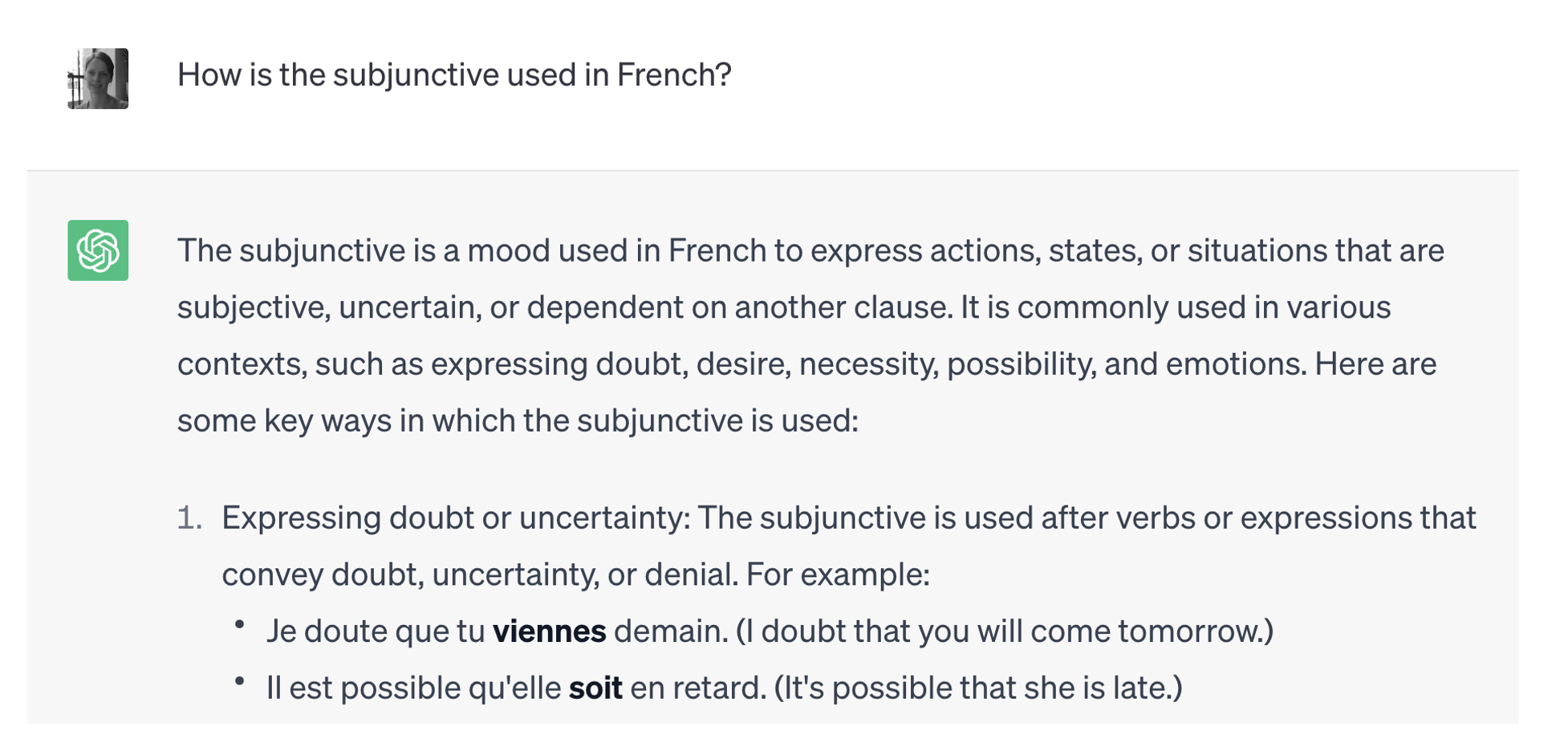
To practice grammar, you can request ChatGPT to create a series of activities or exercises such as fill-in-the-blank exercises, sentence transformations, or even creating dialogues using certain grammar rules.
As you already know, studying grammar in context is highly effective. You can ask ChatGPT to write a paragraph using a specific grammar point, such as the subjunctive in French, and request that it highlights the subjunctive forms by writing them in capital letters. This exercise allows you to see the grammar in action and understand its usage within a given context.
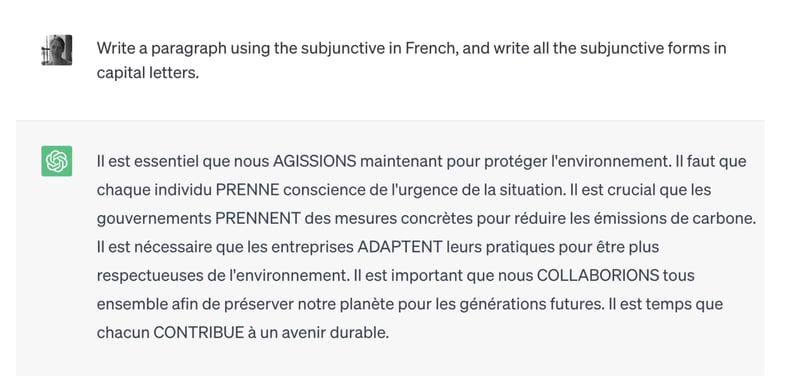
You can then ask the program to create prompts that require the use of the subjunctive:
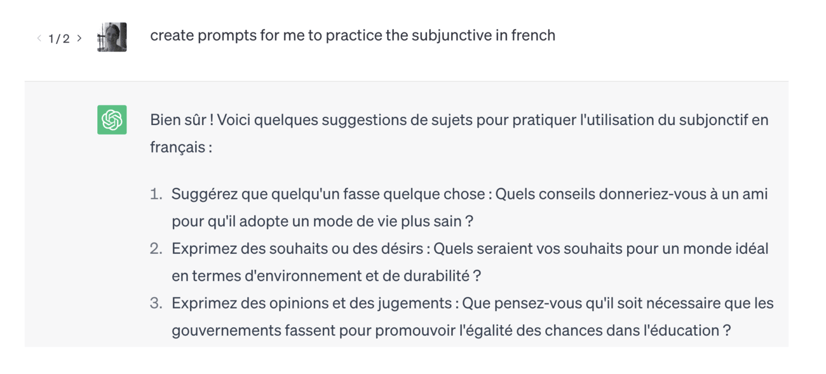
5. ChatGPT for Reading and Listening Comprehension.
ChatGPT can assist you in practicing reading comprehension by generating multiple-choice questions based on an article in a foreign language. You can provide a link to the article and ask ChatGPT to create relevant questions for you to answer. You can then ask ChatGPT to answer the comprehension questions it generated and compare your answers with the model’s response. Note that ChatGPT 3.5 cannot read a URL. You will need to paste a copy of the article itself in the chat window.
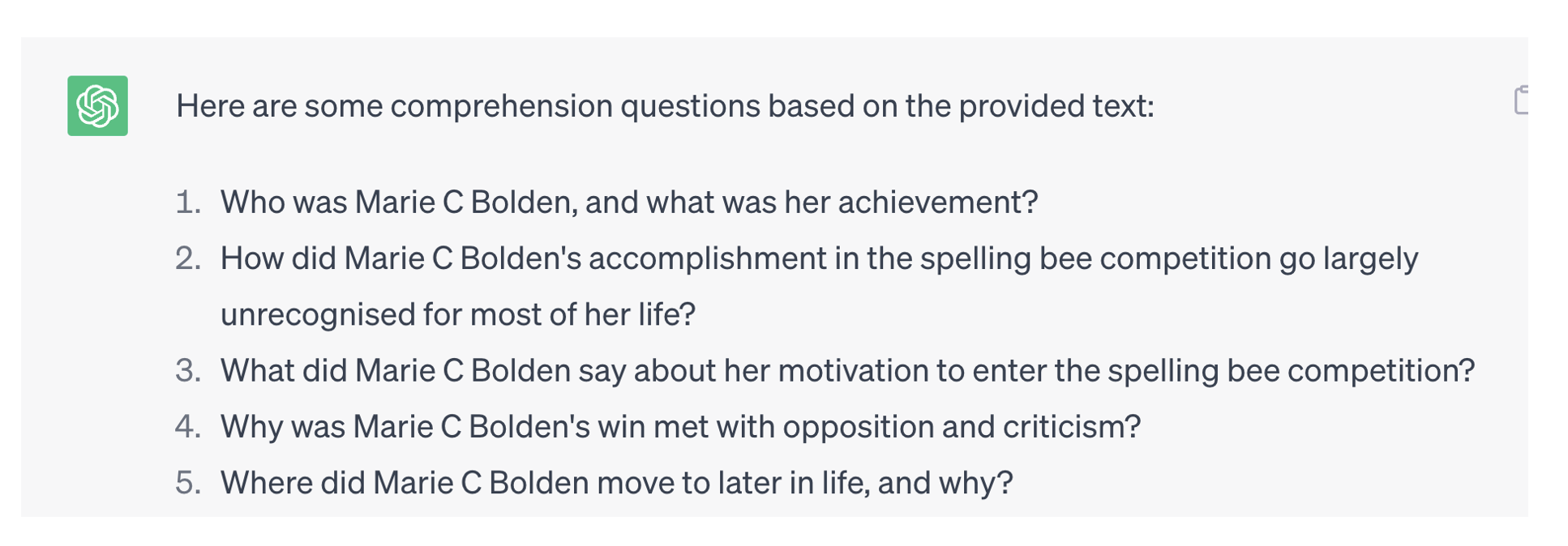
The ChatGPT for Youtube extension generates summaries of videos. Note that this feature only works when the video you are using has a transcript available. One useful way to utilize this plugin is by reading the summary before watching the video. This allows you to tap into any existing knowledge you may have about the subject and grasp the video’s context in advance.
Using these tools, you can actively engage with authentic content in the language you’re learning, whether it’s articles or videos, and assess your comprehension in a structured manner. This approach adds variety to your language practice and helps develop both reading and listening skills.
6. ChatGPT for Writing Practice
ChatGPT can serve as a valuable tool for receiving immediate feedback on your writing. It can identify and correct grammatical errors, as well as suggest alternative phrasing to enhance your writing style. Again, the accuracy of this feedback may vary depending on the specific language you’re using.
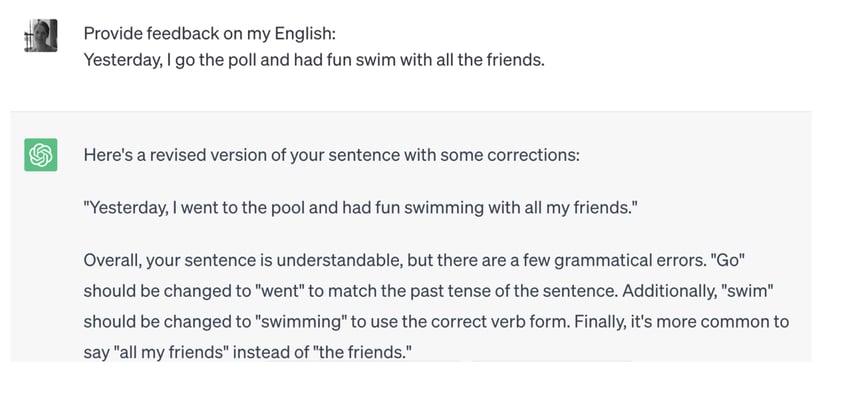
In addition to receiving feedback, you can also request writing prompts to practice different types of writing such as letters, emails, Tweets, or text messages, allowing you to explore various formats and registers. Whether you want to practice formal, professional communication or casual, informal messaging, ChatGPT can generate tailored prompts and models.
Conclusion
While ChatGPT can be a helpful tool for language practice and assistance, it’s important to remember that language learning goes beyond just interacting with an AI model. ChatGPT, being based on a large dataset of text, may not fully capture the cultural nuances and contexts specific to different cultures and regions. Indeed, language is primarily a means of communication between human beings, and interacting with real people is invaluable for language learning.
Engaging in conversations, participating in live classes, and practicing with native speakers can greatly enhance your language skills, including pronunciation, cultural understanding, and idiomatic expressions. Taking live classes with organizations like ICLS can be highly effective for language learning. Our classes typically offer structured lessons, opportunities for conversation practice, and guidance from experienced instructors who can provide real-time feedback and address specific questions or challenges.
Combining different language learning resources, such as live classes, language exchange programs, immersive experiences, and self-study materials, can create a well-rounded and comprehensive approach to language learning. It allows for a deeper understanding of the language, culture, and effective communication with others. So, while ChatGPT can provide assistance and practice, it’s important to supplement it with real-life interactions to truly develop proficiency and grasp the cultural nuances of the language you’re learning.
Are you a teacher interested in learning how to use ChatGPT in your language classes? Learn more about our ChatGPT for Language Instruction workshop.
Disclaimer: This article was written with the help of ChatGPT.


